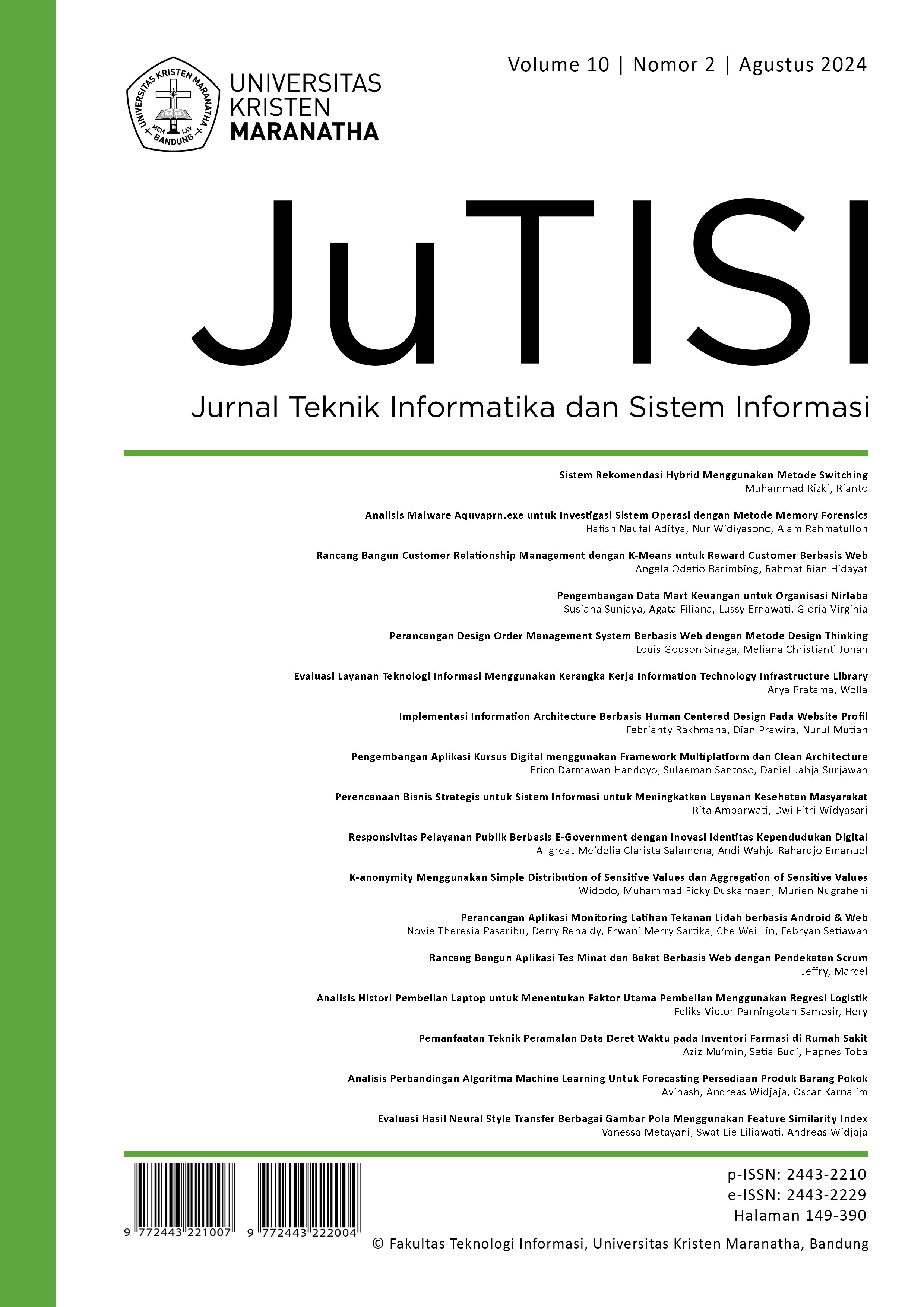Hybrid System Recommendations Using the Switching Method
Main Article Content
Abstract
Technological developments force businesses to provide the best service by making recommendation systems a solution to maintain consumer loyalty. Many studies have been carried out on recommendation systems to overcome Cold-Start or Serendipitous Problems. This study conducted Hybrid Collaborative Filtering and Content-Based filtering using the Switching method as a medium for selecting the correct data and attributes. Furthermore, the data is processed using the TF-IDF and KNN algorithms. This study conducted several tests using various K values and the training and testing data composition. The test results show that the highest accuracy produced by the model that has been developed is 83.62 percent for the switching method with the product category attribute as the variable label and 74.9 percent for the switching method with the rating attribute as the variable label. The training and testing data ratio used in this study is 70:30, with a K equals 3. The study's results also found a significant correlation between the K value and the accuracy value, where a high K value would also result in high accuracy.
Downloads
Download data is not yet available.
Article Details
How to Cite
[1]
M. Rizki and R. Rianto, “Hybrid System Recommendations Using the Switching Method”, JuTISI, vol. 10, no. 2, pp. 149–160, Aug. 2024.
Section
Articles

This work is licensed under a Creative Commons Attribution-NonCommercial 4.0 International License.
This is an open-access article distributed under the terms of the Creative Commons Attribution-NonCommercial 4.0 International License (https://creativecommons.org/licenses/by-nc/4.0/) which permits unrestricted non-commercial used, distribution and reproduction in any medium.
This work is licensed under a Creative Commons Attribution-NonCommercial 4.0 International License.

